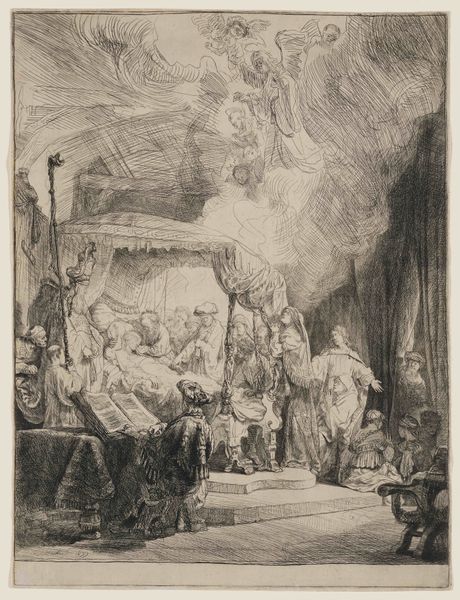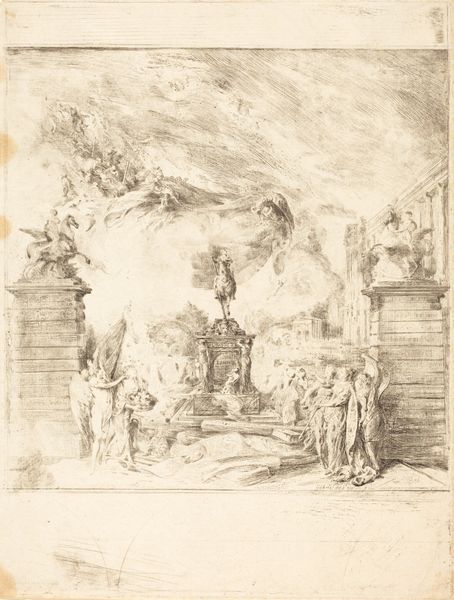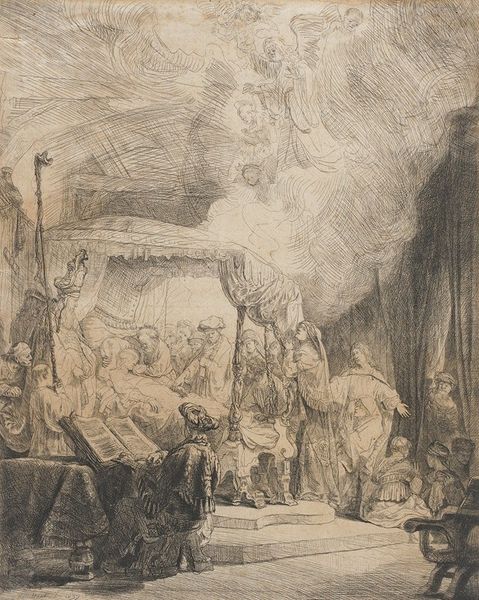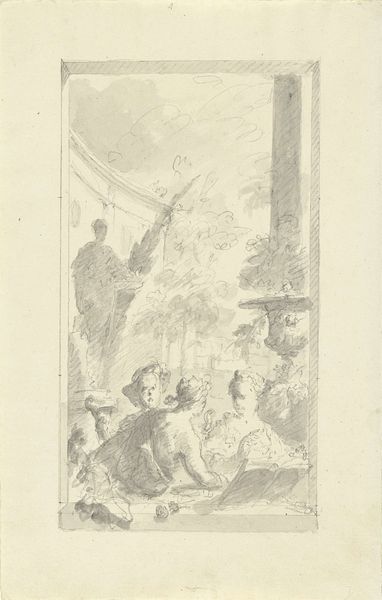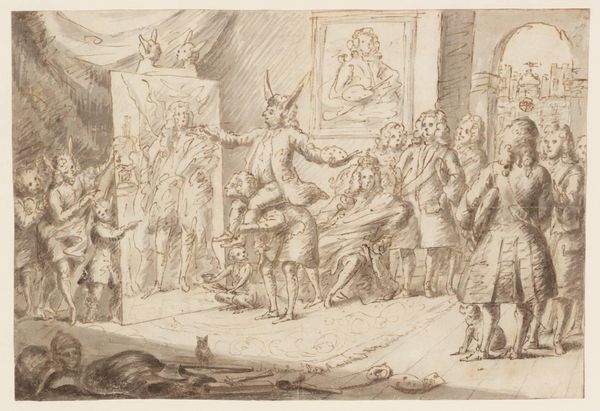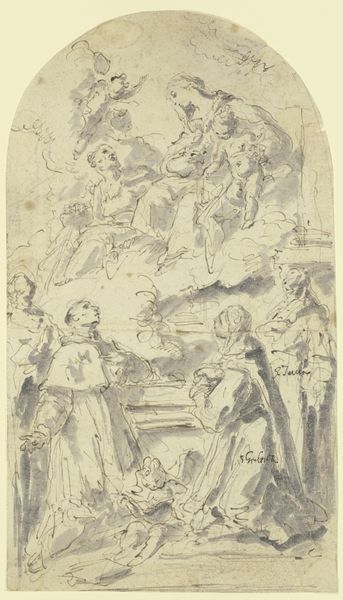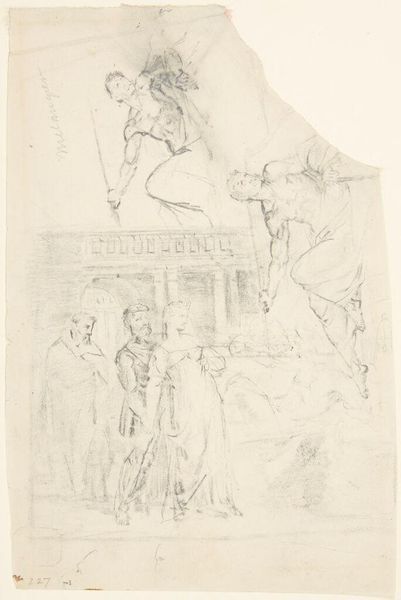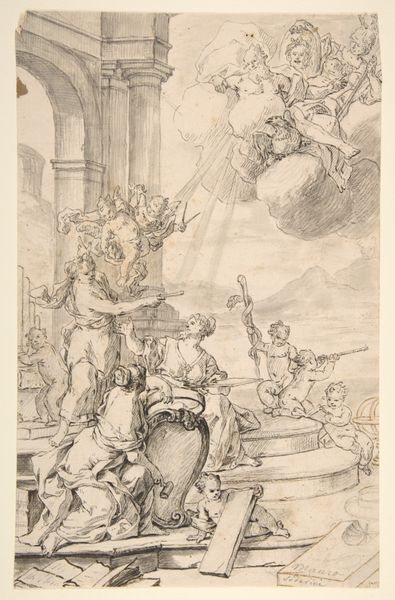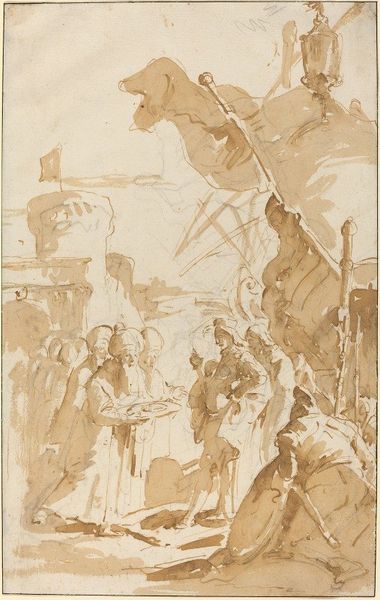
print, etching, ink
#
narrative-art
#
baroque
#
dutch-golden-age
# print
#
etching
#
pencil sketch
#
charcoal drawing
#
figuration
#
ink
#
pencil drawing
#
history-painting
Dimensions: height 409 mm, width 312 mm
Copyright: Rijks Museum: Open Domain
Curator: This is Rembrandt van Rijn's etching, "The Death of the Virgin," created in 1639, now residing here at the Rijksmuseum. Editor: What strikes me immediately is the sense of contained grief. The tight composition focuses all the emotional weight in the small space around the Virgin's deathbed, while the surrounding activity hums at a much lower frequency. Curator: Indeed. Consider how Rembrandt has constructed the scene. The eye is drawn to the bed, but also upwards to that burst of light and implied celestial figures. There’s a very deliberate layering of planes and tonal values at play here. Semiotically, it operates within well-established baroque frameworks depicting this scene. Editor: Yes, the composition uses that very familiar division between the earthly and the divine, rendered with the light emanating from the top that pulls us heavenward, as it also anchors itself, with its figures, to the narrative unfolding down below. It's also important to see this etching within its historical context. Consider the changing social and religious landscapes of the Dutch Golden Age. Curator: Exactly, the formal treatment creates meaning in that social climate. The distribution of light and shadow are carefully modulated, almost architectural in their precision. Take, for example, the contrasting textures he manages to achieve solely through line work – the delicate veiling, the solidity of the furniture… Editor: Agreed, and if we shift the lens slightly, we can see this too as a moment in women’s history, told from a decidedly male point of view. This image constructs a narrative of female passivity even in death, surrounded and observed by a largely male gathering. Curator: It is the observation and careful documentation of light and form that transcends those limitations, and which continues to impress the viewer. Editor: Certainly. However, placing that mastery in dialogue with questions of power, gender, and representation enriches the artwork for contemporary audiences. Ultimately, seeing it as both a masterful example of etching, and a product of very particular biases. Curator: Precisely, seeing Rembrandt in this work wrestle with tone and light helps us engage the technical brilliance. Editor: And seeing Rembrandt at this moment as the inheritor and propagator of tradition challenges us to reflect on those cultural scripts in our own time.
Comments
No comments
Be the first to comment and join the conversation on the ultimate creative platform.

